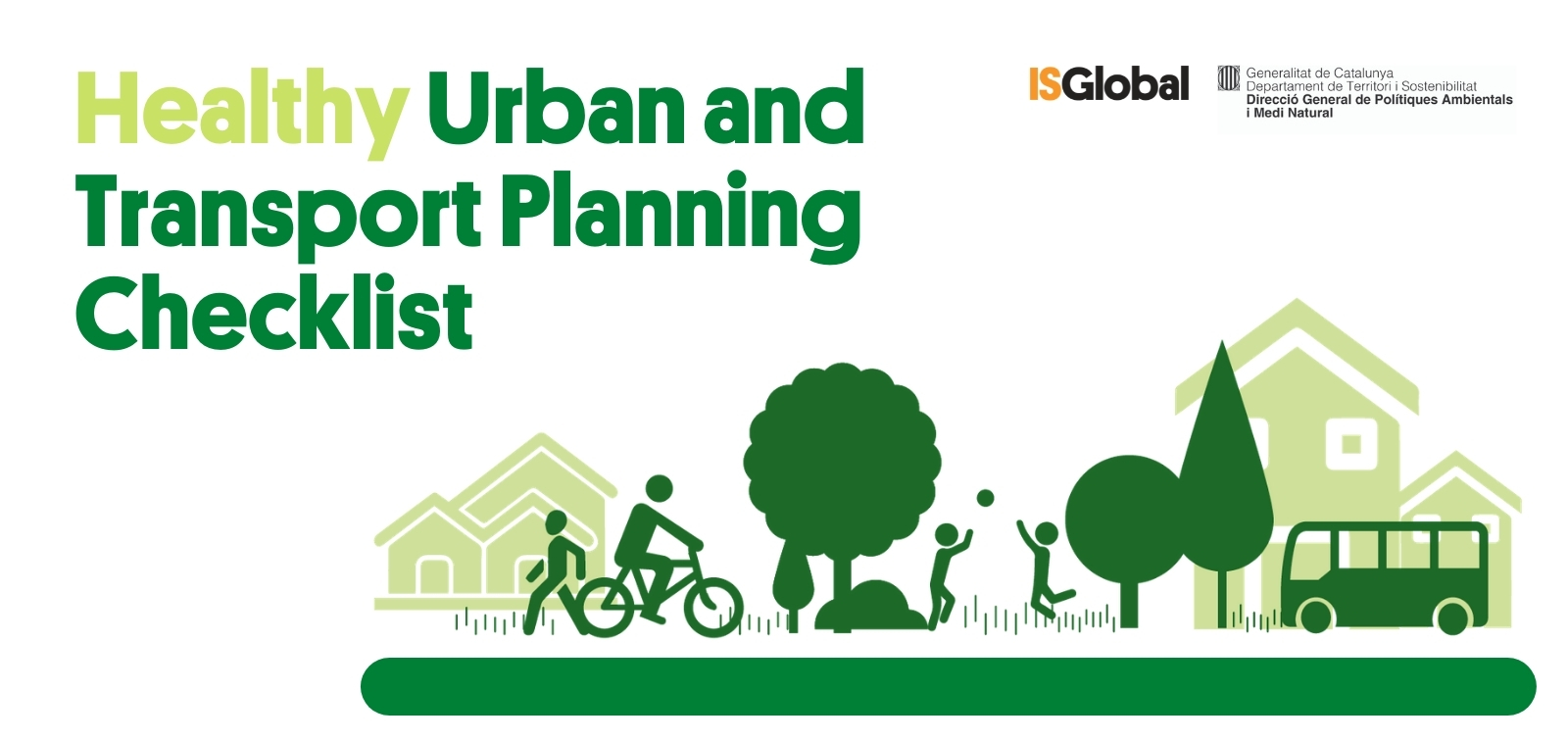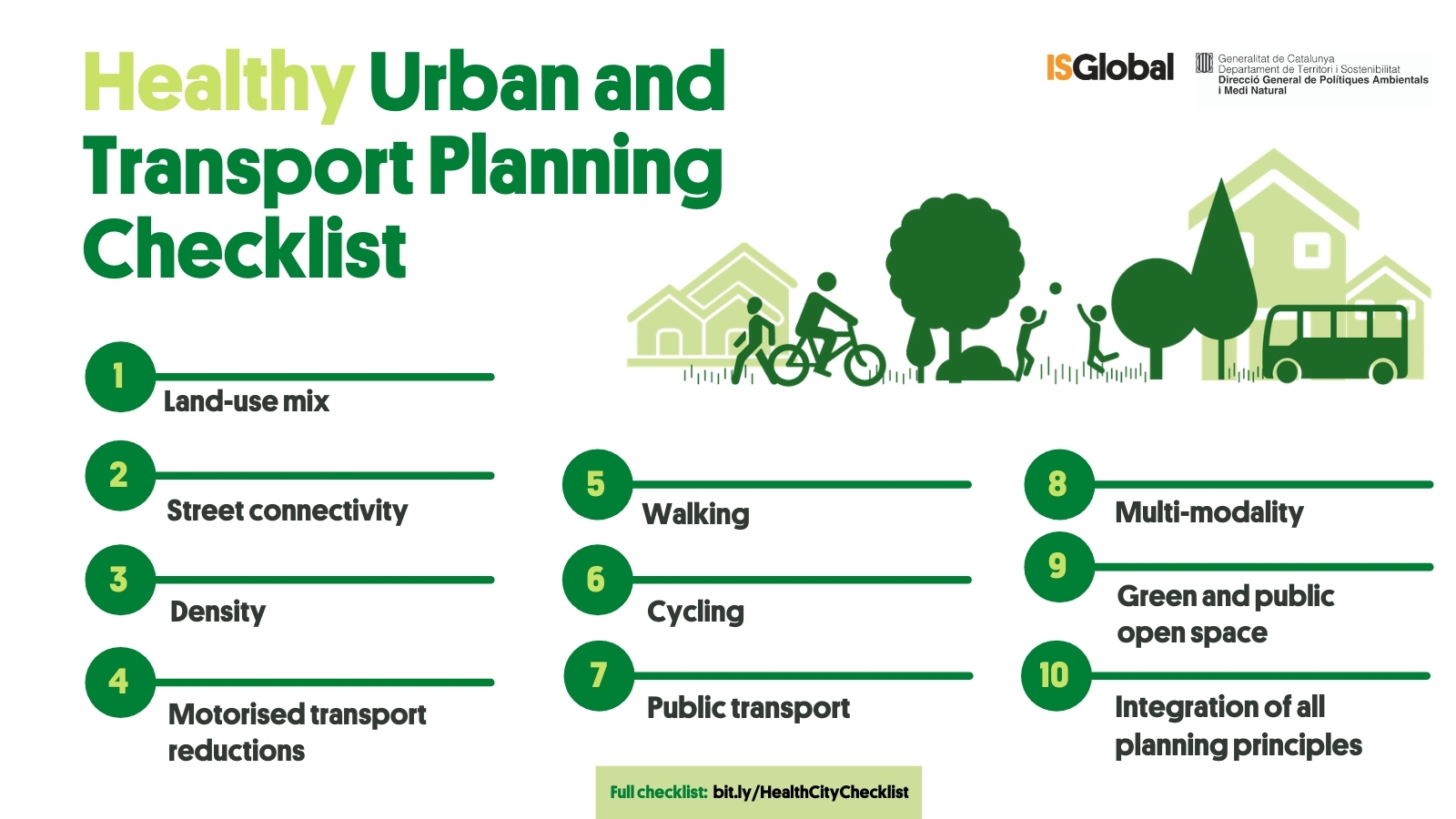10 Keys to Integrating Health Into Urban and Transport Planning
A new paper based on a literature review and a participatory process identifies principles and indicators for healthy urban design
23.06.2021
As much as 20% of premature mortality can be attributed to poor urban and transport planning. Nevertheless, quantitative indicators to guide the integration of health components into urban design have been lacking. To address this gap, a team from the Barcelona Institute for Global Health (ISGlobal), a centre supported by the ”la Caixa” Foundation, has identified 10 principles—and corresponding indicators—to help urban planners incorporate public health into their work.
The new study, published in the International Journal of Hygiene and Environmental Health, was undertaken at the request of the Directorate-General for Environmental Policies and the Natural Environment, which forms part of the Catalan Department of Climate Action, Food and Rural Agenda, with the aim of guiding urban planners in the design of healthy cities. The researchers conducted a review of the scientific literature and organised a participatory process with relevant stakeholders in Catalonia, including the Catalan Government, the Barcelona Provincial Council, the Barcelona Metropolitan Transport Authority (ATM) and the Catalan Land Institute (INCASÒL).
“This study is unique in that it brings together scientific evidence on urban health, which means that the proposed principles have a solid theoretical basis,” commented Mark Nieuwenhuijsen, coordinator of the study and Director of the Urban Planning, Environment and Health Initiative at ISGlobal. “At the same time, having drawn on the experience of relevant stakeholders, we are able to guarantee that the indicators can be applied in practice and will be useful for decision-makers.”
The review of the scientific literature was guided by four urban and transport planning objectives that previous studies have associated with favourable health and well-being outcomes: 1) development of a compact city with mixed land use and high street connectivity; 2) reduction of private motorised transport; 3) promotion of active and public transport (walking and cycling); and 4) development of green and public open space.
10 Principles and Indicators
The new paper summarises the scientific literature and the participatory process into 10 principles for integrating health into urban planning right from the outset (zoning phase) and provides a checklist for this purpose. For example, for the first principle, which has to do with the distribution of green and public open space, one of the proposed indicators is that at least 25% of the total land area should be dedicated to these types of spaces.
The checklist is designed to be used right from the outset of urban development. It can be used in all sorts of contexts but is especially intended for European cities with more than 50,000 inhabitants. For application in other contexts, the indicators can be adapted to local conditions.
“If implemented, the principles identified in this study should reduce the burden of disease and death associated with urban and transport design and lead to cities that are not only healthy but also liveable, desirable, equitable, sustainable and climate change-resilient, thereby achieving co-benefits,” explained ISGlobal researcher Natalie Mueller, lead author of the study. “For example, a shift from private car use to active and public transport and the greening of cities is not only beneficial for health, but also reduces the carbon footprint and helps to mitigate the effects of climate change.” She added: “However, it is important that cities are improved consistently and equitably without leaving any neighbourhoods or groups behind.”
“Building healthy cities requires a multidisciplinary approach that involves all stakeholders, from urban planners to public health experts,” concluded Nieuwenhuijsen.
The 10 principles for designing healthy cities are as follows:
1. Land-use mix
2. Street connectivity
3. Density
4. Motorised transport reductions
5. Walking
6. Cycling
7. Public transport
8. Multi-modality
9. Green and public open space
10. Integration of all planning principles
More information
The full checklist is available on the website of the Directorate-General for Environmental Policies and the Natural Environment of the Catalan Department of Climate Action, Food and Rural Agenda.
Reference
Natalie Mueller, Carolyn Daher, David Rojas-Rueda, Laura Delgado, Horacio Vicioso, Mireia Gascon, Oriol Marquet, Cristina Vert, Irene Martin, Mark Nieuwenhuijsen. Integrating Health Indicators Into Urban and Transport Planning: A Narrative Literature Review and Participatory Process. International Journal of Hygiene and Environmental Health. 6 June 2021. doi.org/10.1016/j.ijheh.2021.113772.




